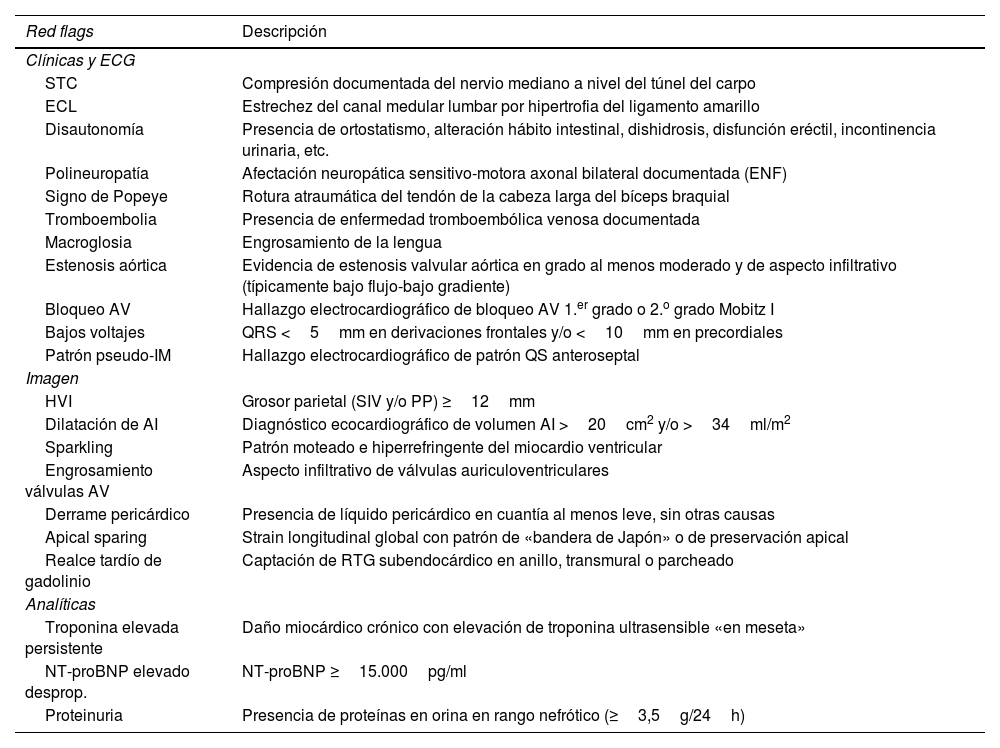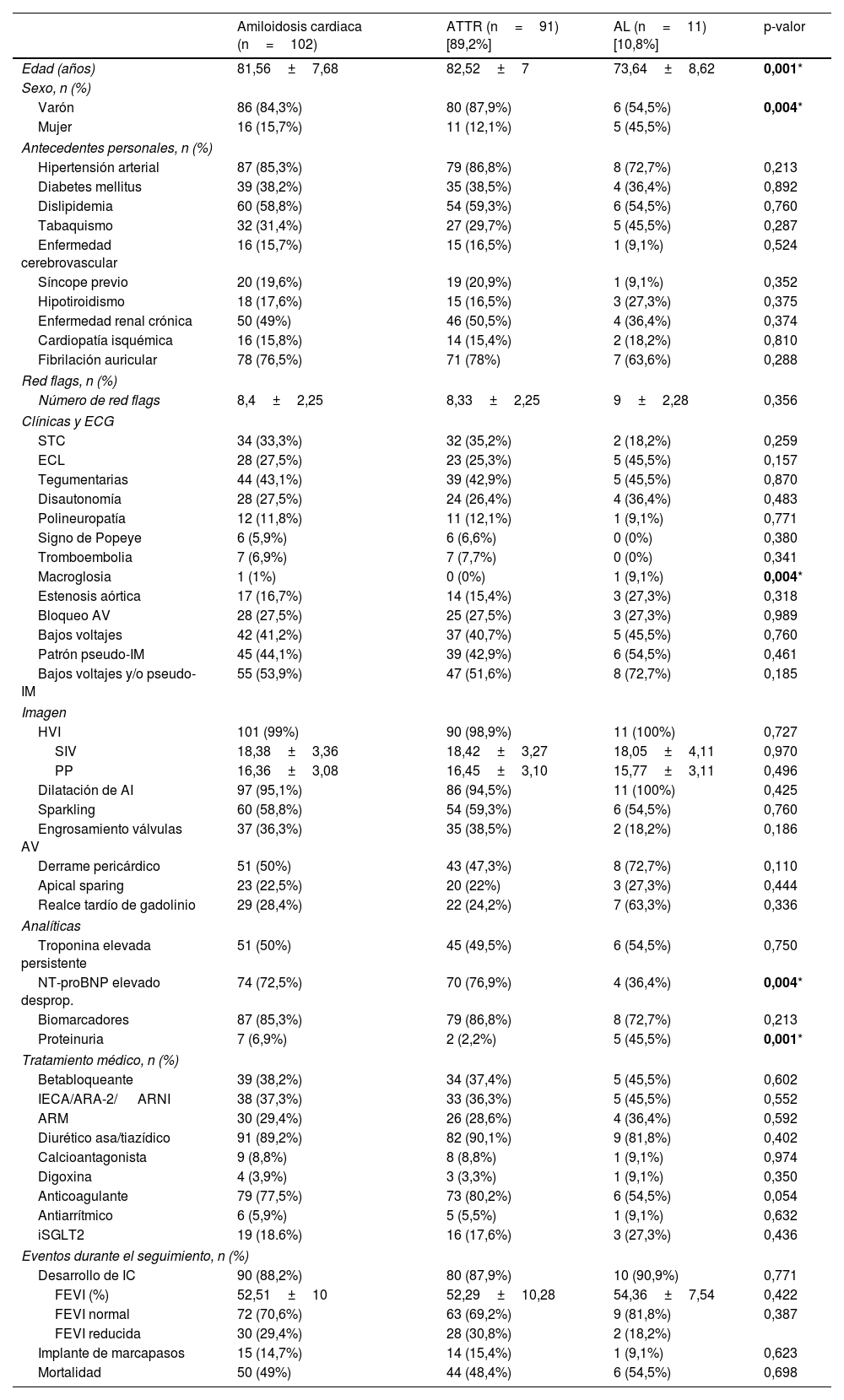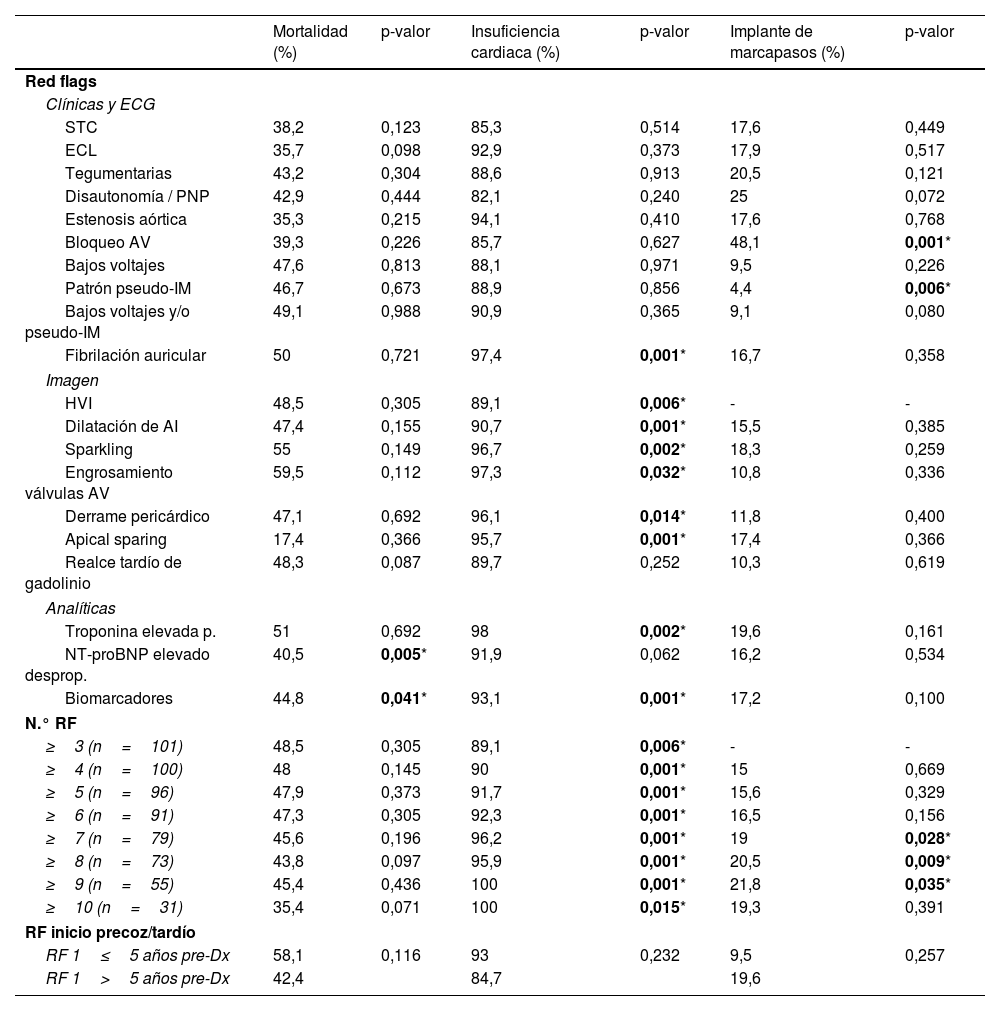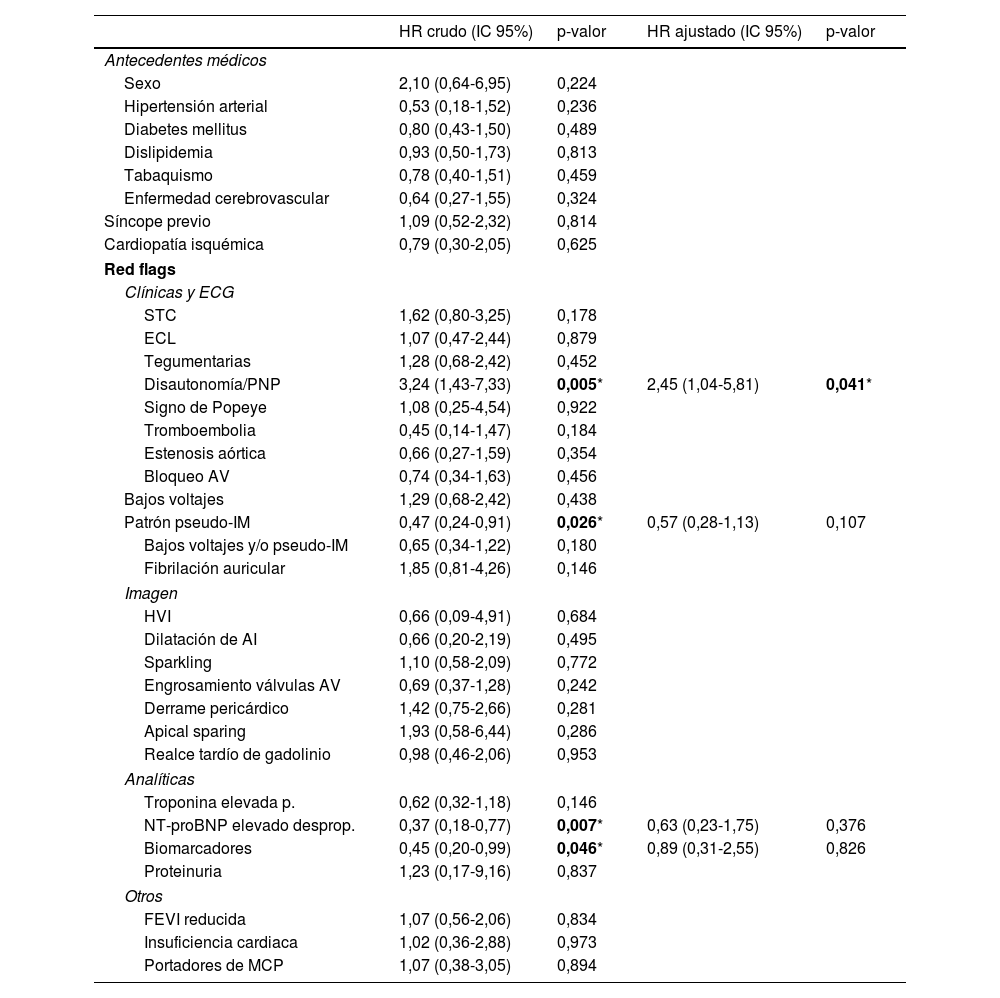Las red flags (RF) son manifestaciones típicas cardiacas y extracardiacas que pueden preceder en varios años al diagnóstico definitivo de la amiloidosis cardiaca (AC), jugando un papel clave en el diagnóstico precoz de la enfermedad. El objetivo del estudio fue determinar la cronología de aparición de RF a lo largo de la historia natural de la AC, así como su influencia pronóstica.
Pacientes y métodosEstudio observacional, retrospectivo, de pacientes consecutivos con diagnóstico definitivo de AC en un centro hospitalario terciario de Ciudad Real (España) entre febrero de 2016 y diciembre de 2023. Se definieron 21 RF y 3 eventos clínicos adversos, estableciendo la fecha de aparición de cada uno de ellos.
ResultadosSe incluyeron 102 pacientes (81,6±7,7 años; 84,3% varones) con diagnóstico de AC (89,2% TTR; 10,8% AL). La prevalencia de RF fue muy elevada (8,4±2,3). En la historia natural, las primeras en aparecer fueron las tegumentarias, siendo las más específicas cardiológicas las más cercanas al diagnóstico. La mortalidad a 2 años fue del 49%, asociándose las RF de biomarcadores y la presencia de ≥10 RF con mayor mortalidad.
ConclusionesLas RF resultaron altamente prevalentes entre los pacientes con AC y precedieron sustancialmente al diagnóstico de la enfermedad. La carga de RF se asoció con el pronóstico en el seguimiento de los pacientes con ATTR.
Red flags (RF) are typical cardiac and extracardiac manifestations that may precede the definitive diagnosis of cardiac amiloidosis (CA) by several years, playing a pivotal role in the early diagnosis of the disease. The principal aim of the research was to determine the chronology of onset of RF throughout the natural history of CA as well as its prognostic influence.
Patients and methodsObservational, retrospective inquiry of consecutive patients with a definitive diagnosis of CA in a terciary hospital centre in Ciudad Real (Spain) between February 2016 and December 2023. We defined 21 RF and 3 adverse clinical events, establishing the date of occurrence of each of them.
Results102 patients (81.6±7.7 years; 84,3% males) with a diagnosis of CA (89.2% TTR; 10,8% AL) were included. The prevalence of RF was very high (8.4±2.3). In the natural history, the first to appear were integumentary, with the most specific cardiological ones being the closest to diagnosis. The 2-year mortality was 49%, with biomarker RFs and the presence of ≥10 RFs being associated with higher mortality.
ConclusionsRFs proved highly prevalent among patients with CA and substantially preceded disease diagnosis. RF burden was associated with prognosis in the follow-up of ATTR patients.
Artículo
Comprando el artículo el PDF del mismo podrá ser descargado
Precio 19,34 €
Comprar ahora












